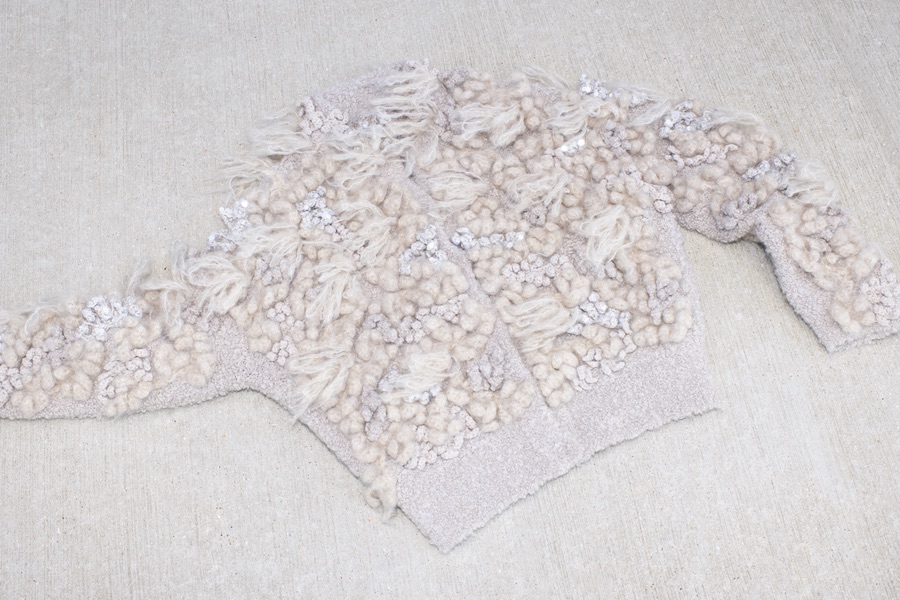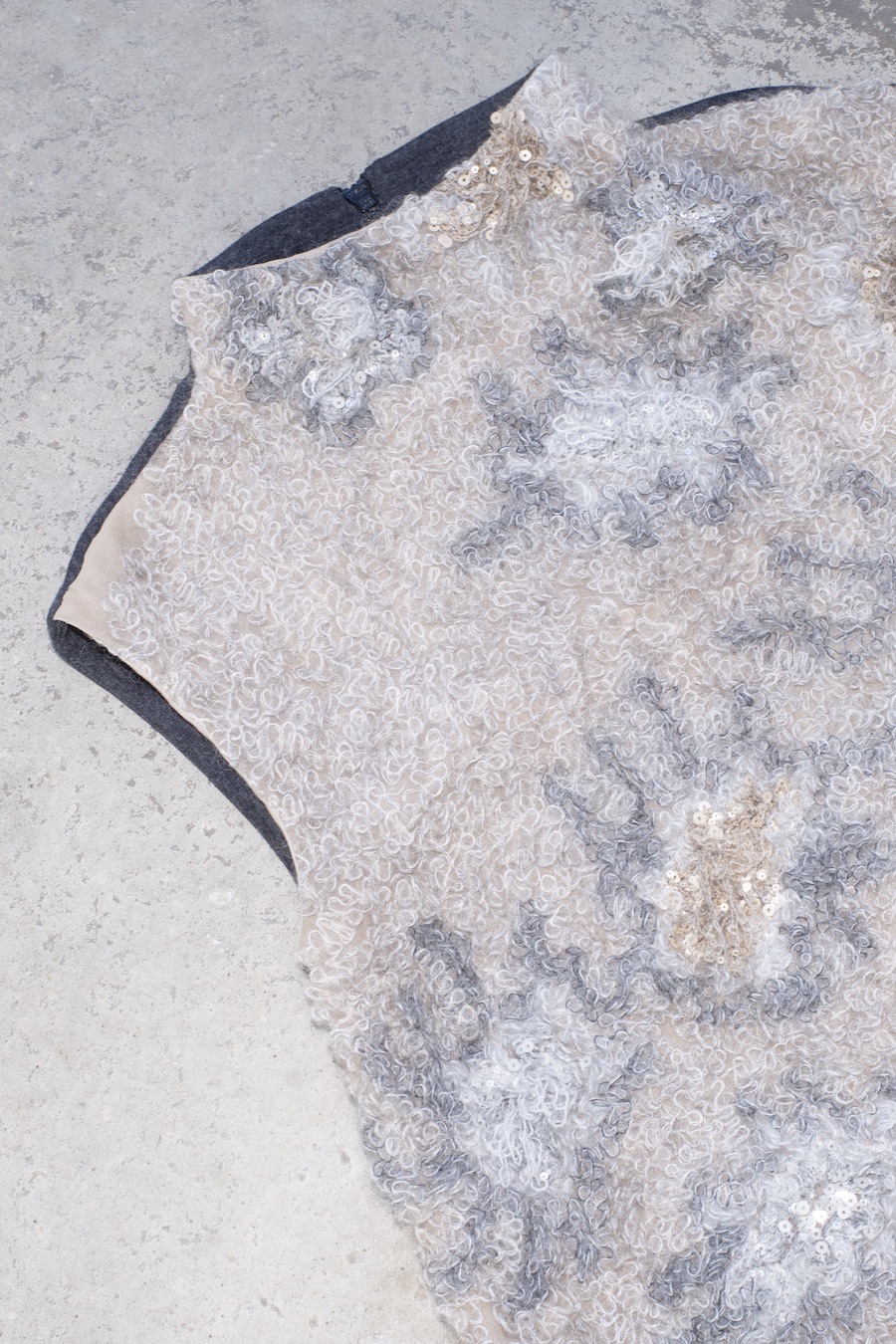Made in Italy: Brunello Cucinelli Opera knits
These unique garments capture nature and craftsmanship in all its finery

Solomeo, a medieval hamlet located in the central Italian region of Umbria, can trace its history back to the 12th century. The site’s Church of Saint Bartholomew was first completed in the late 12th to early 13th century; nearby, Solomeo’s past residents built a castle to fortify their settlement in 1391. But to many, it is Brunello Cucinelli who put Solomeo on the map. The Italian creative director and agenda-setting entrepreneur first placed Solomeo at the heart of his empire in 1985.
Born to a family of farmers, Cucinelli was raised off-the-grid in Castel Rigone, a 15th century village near Umbria’s regional capital Perugia and a 30 minute-drive away from Solomeo. Cucinelli dropped out of his engineering degree; changing tack, he began experimenting with the dyeing of soft cashmere, making vivid colours his signature. Cucinelli’s bright knitwear struck a chord; in 1978, he established his eponymous company and four years later, the young entrepreneur and his family relocated to Solomeo. Here, he proceeded to purchase the hamlet’s castle; refurbished, the historic dwelling has been acting as the headquarters of Brunello Cucinelli S.p.A.. Solomeo has since been the foremost benefactor of – and some may argue the engine behind – the meteoric rise of Cucinelli’s business into a global concern, with a turnover of €607.8m (£550.3m) in 2019.
“When we were little, our father had just started his business, so we can say that we experienced the establishment and growth of the company as if it was a natural part of our own life,” says board member Carolina Cucinelli, who acts as the business’ brand and media relations manager. Both Carolina and her sister Camilla were raised in Solomeo by Cucinelli and his wife Federica Benda. “The spaces of the company have always been the spaces of our childhood, where we spent our time after school, playing with each other and with the ladies of the production who helped us put together little garments for our dolls. Both of us were fascinated by this work, which taught us the love for craftsmanship.”
The Week
Escape your echo chamber. Get the facts behind the news, plus analysis from multiple perspectives.

Sign up for The Week's Free Newsletters
From our morning news briefing to a weekly Good News Newsletter, get the best of The Week delivered directly to your inbox.
From our morning news briefing to a weekly Good News Newsletter, get the best of The Week delivered directly to your inbox.
A Petri-dish-like set-up, Solomeo is home to around 300 artisans; an additional network of craftspeople stretches across Umbria and counts 3,000. Such is Cucinelli’s belief in the traditions and artisanal excellence of “Made in Italy” craftsmanship that in 2013, he founded La Scuola dei Mestieri (School of Crafts), inspired by the biographies and ideas of reformers William Morris and John Ruskin, both leading names of the arts and crafts movement. “Young minds can learn not only the techniques of linking, mending and tailoring for both men and women, but also develop a passion for quality products and the traditional skills that have always been guarded by our master craftsmen, now expanded and made contemporary by the use of technology,” Carolina enthuses.
Students are paid a monthly wage and are expected to study three courses, five hours per day. Taught by experienced master makers, the curriculum lists dressmaking skills – patternmaking, women’s tailoring, mending and knitwear – in addition to modules on horticulture and masonry.
“We believe that craftsmanship is very akin to a work of art, like Lorenzo the Magnificent used to say,” adds Carolina, name-checking the 15th century Florentine statesman revered for his patronage of Italy’s Renaissance arts and culture. “Training a craftsman is an articulated business, developing on different levels.”

Knitwear has remained a Brunello Cucinelli trump card. At the apex of the brand’s creations sit the Maglieria Opera, a selection of knitwear designs first introduced a few seasons ago. A showcase of the make’s artisanal might, Opera knits balance traditional handcrafts with the latest technical and digital innovations. “These valuable pieces, fully handmade in all their different stages, require many hours of an artisan’s work that is however supported by technology,” Carolina tells me. “They are unique items, like real pieces of art.”
A free daily email with the biggest news stories of the day – and the best features from TheWeek.com
For this autumn’s selection, artisans have spent between 26 and 29 hours to finish individual Flower Crochet garments. It’s a puzzle-like technique: inspired by planted gardens in bloom, artisans first crochet individual flowers using a mohair and wool yarn or Alpaca jaspé yarn, which are then finessed with sparkling accents. Flowers are then assembled and sewn together, to create each garment bloom by bloom.
All attempts at resistance to running one’s hand through Cucinelli’s Organic Crochet prove futile: richly textured and three-dimensional in design, the technique nods to rock formations and tree barks covered in moss and lichen, as spotted on winter walks through Umbrian forests. A machine-knitted base is entirely decorated by hand, mixing and matching individually crafted elements fashioned from a variety of rare yarns including alpaca and cashmere bouclé. Artisans follow a map-like pattern outlining seasonal designs; the nature of their work sees small differences prevail, lending an individual touch to each Organic Crochet compounding Cucinelli’s dedication to the artisan’s hand.
Elsewhere, the woodlands surrounding Solomeo have inspired an impressionistic floral pattern expressed in Cucinelli’s Dazzling Flower Embroidery. It’s making-of makes the mind boggle: to create a base, water-soluble ribbons are embroidered using mohair yarns, stitched to form small tight loops. The ribbon is then embroidered onto a silk base; once carefully washed, only the soft mohair loops remain. Then, iridescent floral shapes are formed from yarns threaded with sequins in two tones and two sizes. “Our customers like to wrap themselves in the softness of cashmere, we think that they love handcrafted goods,” Carolina decrees.
To Carolina, each Brunello Cucinelli item is shaped by the brand’s unique Solomeo set-up. “We always say that whoever buys a Cucinelli item, buys a piece of our village of Solomeo and the work of our artisans. We hope that our garments, in their 20 or 30 year-long life, can tell stories of women and men with skilled hands.”

Photography: Lucy Sparks
